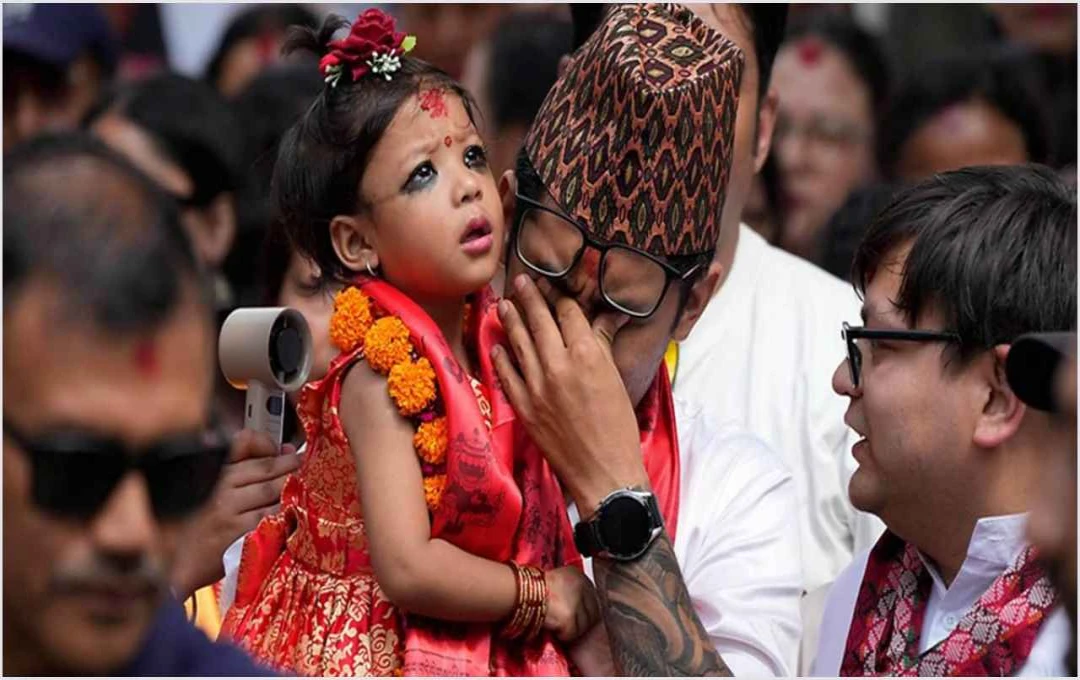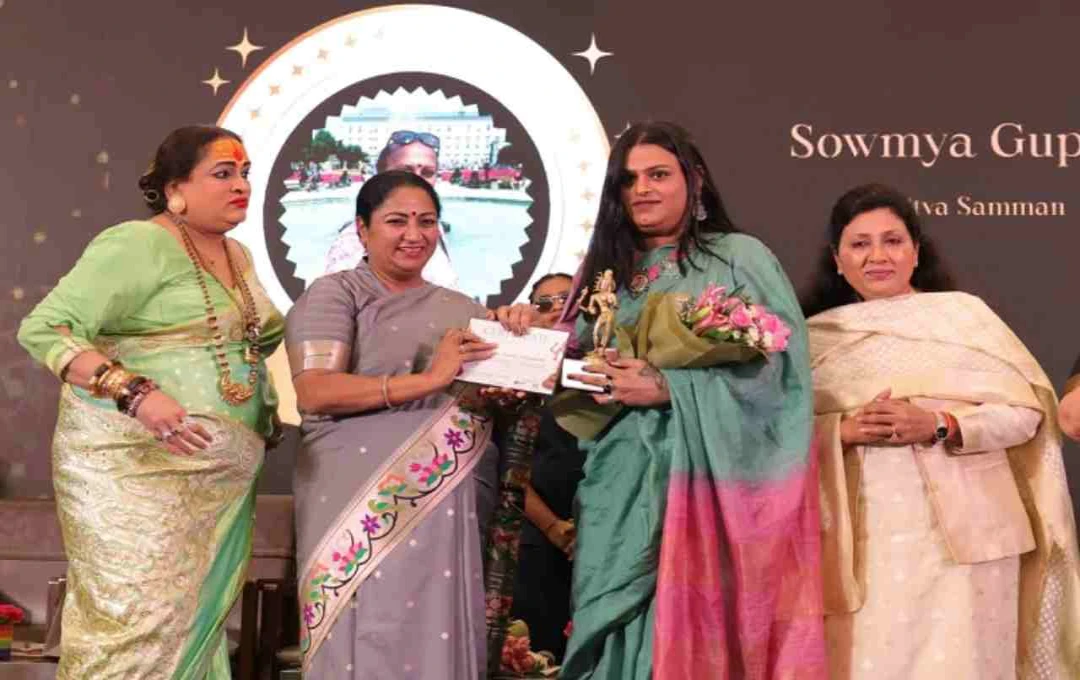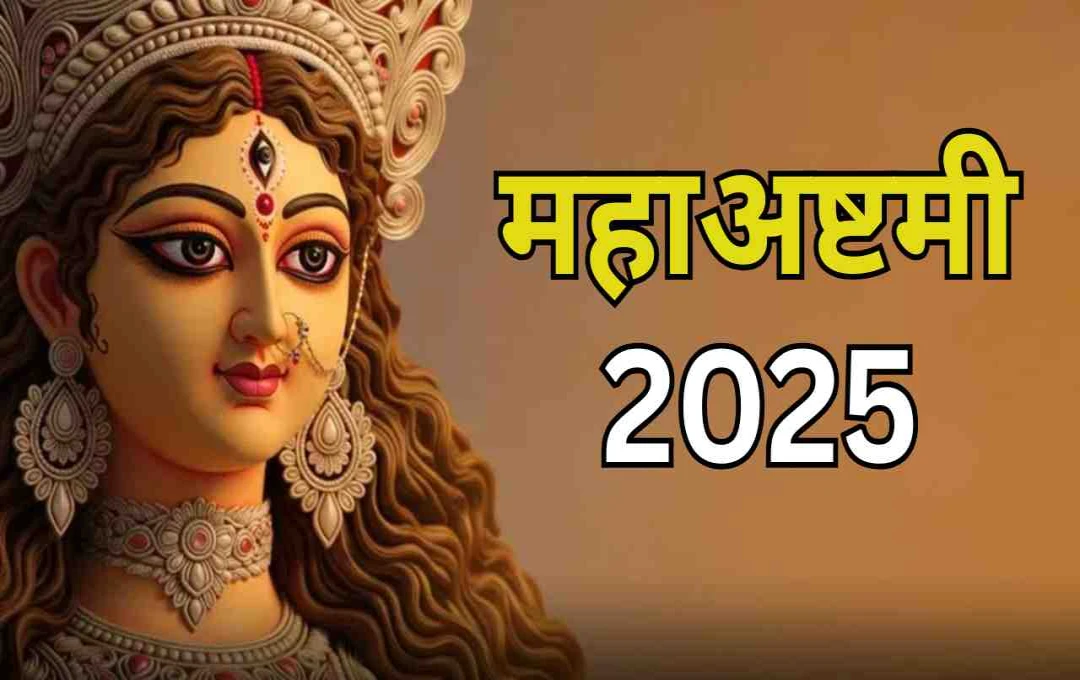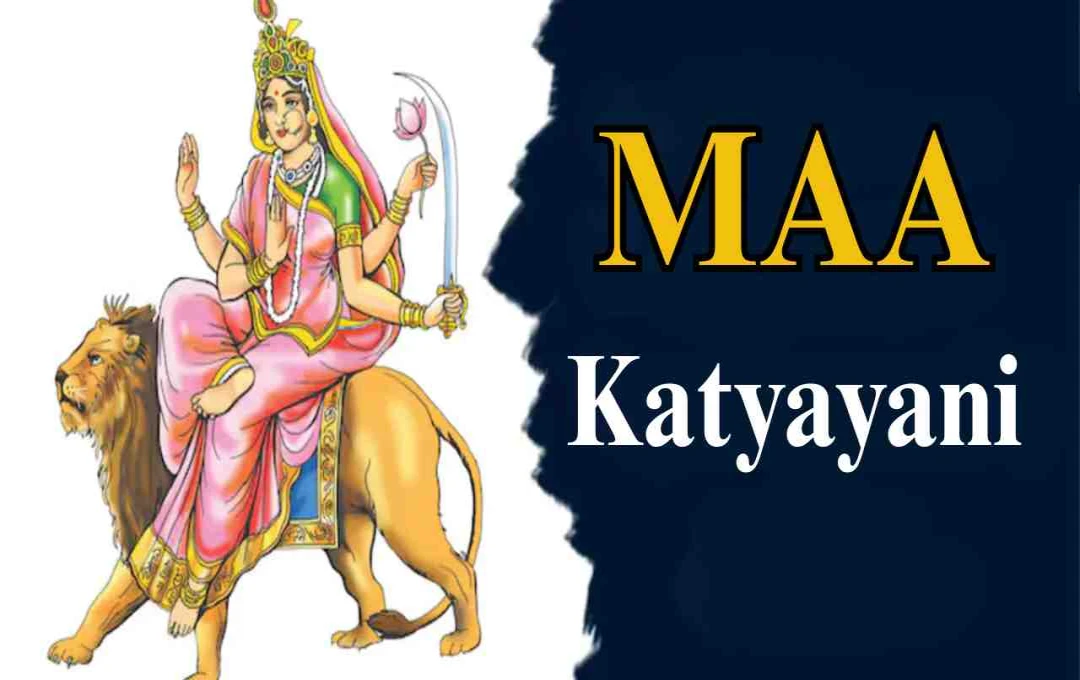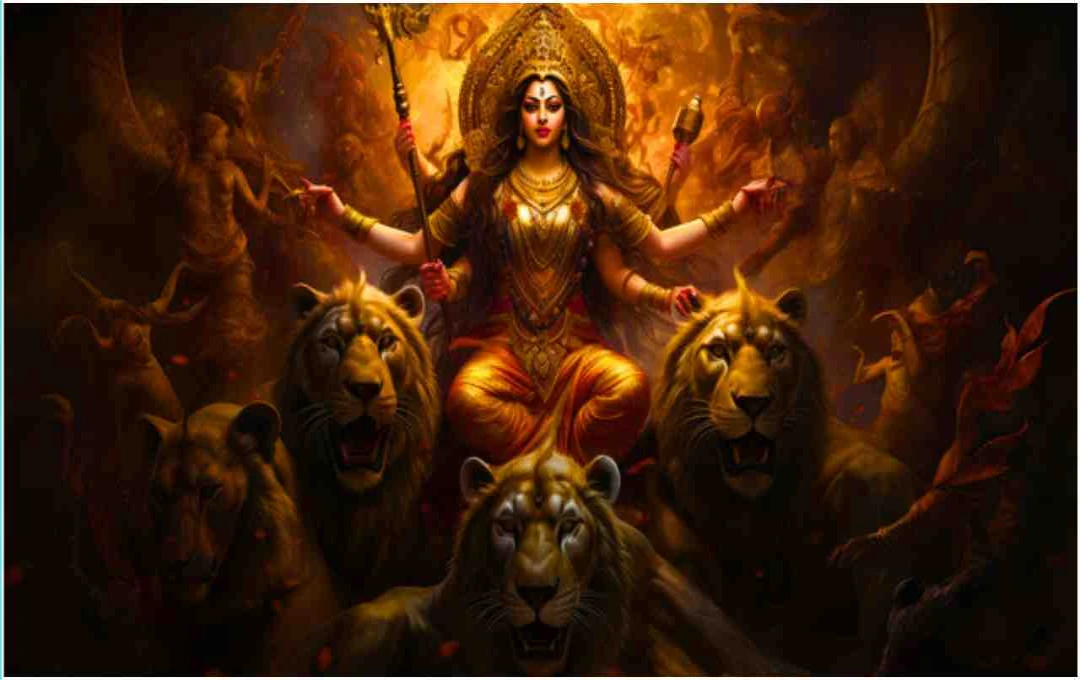During the Dashain festival in Nepal, 2-year-8-month-old Aaryatara Shakya was declared the new Kumari Devi. Aaryatara, who was formally enthroned in the Taleju Bhawani Temple, is worshipped by both Hindus and Buddhists. This ancient tradition is 500-600 years old and is considered a symbol of peace, prosperity, and security in the country.
Kumari Devi Selection 2025: On Tuesday, during the Dashain festival in Nepal, 2-year-8-month-old Aaryatara Shakya was declared the new Kumari Devi. On this occasion, she was formally enthroned in the Taleju Bhawani Temple located in Kathmandu, and devotees offered flowers and blessings on the streets of Kathmandu. The new Kumari Devi is revered in both Hindu and Buddhist faiths, and her worship is performed to maintain peace, prosperity, and security in the country. Her bravery, patience, and 32 physical attributes were tested during the selection process.
Selection and Public Welcome of the New Kumari Devi
On Tuesday, during the Dashain festival in Nepal, 2-year-8-month-old Aaryatara Shakya was declared the new Kumari Devi. Aaryatara Shakya, who was formally enthroned in the Taleju Bhawani Temple, received flowers and blessings from devotees during a procession on the streets of Kathmandu. On Thursday, she will also bestow her blessings upon the President of Nepal and other prominent personalities.
The selection of the new Kumari Devi is significant from both religious and cultural perspectives. She is worshipped in both Hindu and Buddhist faiths. This tradition in Nepal is 500-600 years old and is considered a symbol of peace, prosperity, and security in the country.
Kumari Devi Selection Process and Recognition
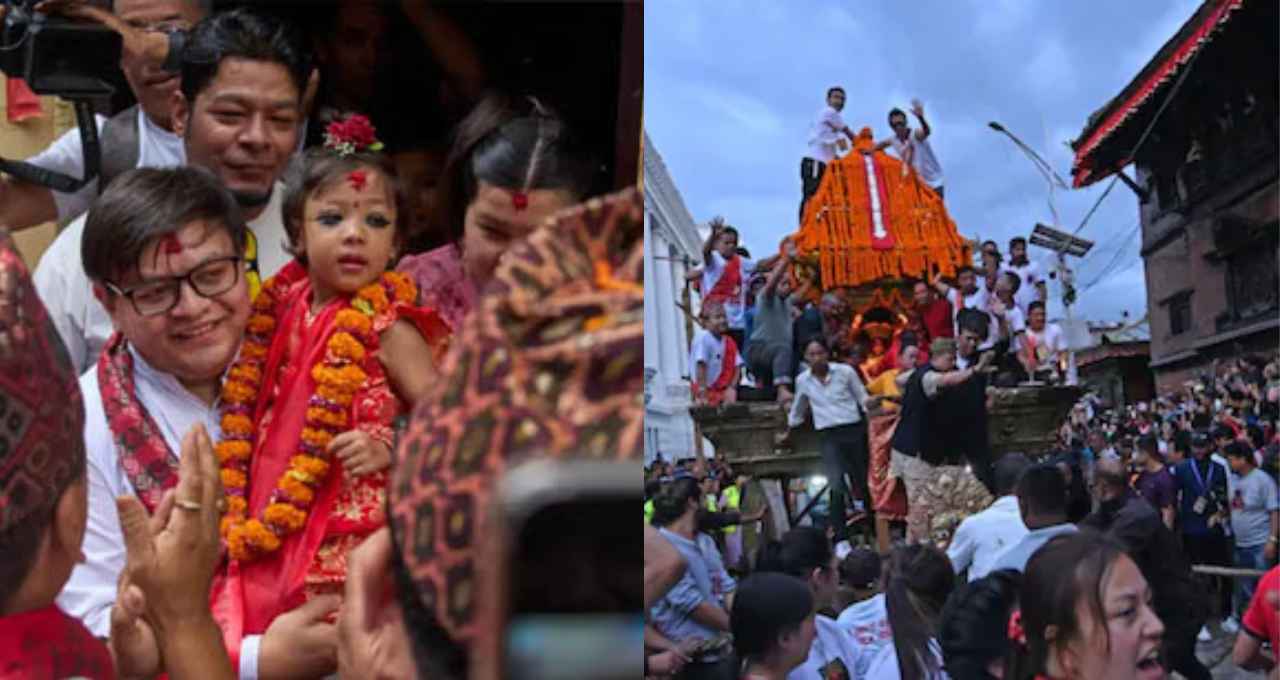
A Kumari Devi is selected exclusively from Shakya girls aged 2 to 4 years. The selection process tests the girl's bravery and patience through challenges such as a dark room, buffalo heads, and frightening masks. Additionally, 32 physical attributes, including the quality of her skin, hair, eyes, and teeth, are examined.
The purpose of this rigorous process is to ensure that the Kumari Devi is capable of facing all kinds of challenges. It is considered extremely important from religious, social, and cultural perspectives.
Life, Tradition, and Daily Activities
The life of a Kumari Devi is specially protected and planned. She must adhere to traditions such as wearing red attire, braiding her hair, and applying a third-eye symbol on her forehead. Her daily life is restricted, with only a few companions, and she gets the opportunity to go out only during selected festivals throughout the year.
During this period, devotees visit the Taleju Bhawani Temple to worship and seek darshan (blessings) from Aaryatara Shakya. In Nepal, this tradition remains a symbol of faith and social identity among the people.
Cultural and Religious Significance
The Kumari Devi is considered the human embodiment of Goddess Taleju. Her presence and blessings are believed to maintain peace, prosperity, and security in Nepal. This tradition dates back to the reign of the Malla kings, and currently, even the President of Nepal comes to seek blessings from this living goddess.
Aaryatara's father, Anant Shakya, expressed his pride that his daughter has now become a goddess. However, transitioning back to a normal life can be challenging for former Kumari Devis. The government has now ensured monthly allowances and educational provisions for retired Kumari Devis.
